The Library of Consciousness
of Consciousness
A Calendar for the Goddess
Beginning with a comparison of reason and logic to intuition, Terence works his way towards exploring the idea of a purposeful goal in the universe which evolution is progressing towards, and humanity's role in this journey. Next, in a nod to the solstice which occurred at the time of the lecture, he plays with the idea of a precessional calendar and argues that it would remind us of the one constant in life, which is flux. Q&A topics include future social myths, morphogenesis, globalization, and psychedelic encounters with the dead.
A Crisis in Consciousness
Terence argues that a solution to our collective planetary crisis has emerged, and it lies in a commitment to shamanistic, feminized, cybernetic, and caring forms of being—to take what each of us is in our very best moments and extend it to fill whole lifetimes.
A Psychedelic Point of View
Buck the status quo! Rebel philosopher Terence McKenna shook things up in this closing speech after a month of being scholar-in-residence at Esalen, arguing that reality escapes our rational grasp. He chided science and philosophy's paltry models that diminish nature's infinitude. Seeking to spur his audience from passive acceptance, McKenna called to revere expanded consciousness. He urged toppling the assumptions bolstering dominator culture to midwife more liberated, psychedelically-attuned societies. By trusting our intuition's cosmic tether, we can transform reality into something stranger and more wonderful than we suppose.
A Symbiotic View of Life
For animals, as well as plants, there have never been individuals. This new paradigm for biology asks new questions and seeks new relationships among the different living entities on Earth. We are all lichens.
A Weekend with Terence McKenna
“Healing the inner elf through trance, dance, and diet”—the session for true McKenna enthusiasts: twelve hours with the bard himself, in which he touches upon practically all of his trademark topics.
An Ocean of Ideas
Terence traces the force of novelty through cosmic evolution, from the birth of the universe to the emergence of life, culture and technology. He speculates wildly about humanity's fate, musing on virtual worlds, interstellar travel, and miniaturization into fairy folk. These phantasmagoric visions reflect the inspirational power of psychedelics to unlock imagination. McKenna emphasizes open-ended thinking to envision new futures, warning against rigid ideology and fundamentalism. Ultimately he explores how psychedelic experiences can catalyze novel perspectives on existence itself.
An Open Letter to Mr. Joe K. Adams
As a self-described "truth-teller" shunned by most, Lynn enthusiastically responds to Adams' hypothesis that psychedelics attack defenses masking perceptual reality. She argues that while complete awareness hinders survival, some collective self-deception enables group action. However, hypocrisy causes tension. Thus, media revelations gradually expose inconsistencies in societal myths, increasingly triggering psychosis by revealing cracks in cultural delusions.
Awakening to Archaic Values
A weekend workshop in which Terence encourages humanity to return to harmonic habits which have been lost in the tide of time.
Build Your Own Damn Wagon
"Do not watch, do not consume," implores Terence McKenna, inviting us on a thought-provoking journey to reclaim our humanness. By building our own conceptual wagons, rather than riding ready-made vehicles of meaning, we can travel along unique paths of critical thinking. Once within our own virtual worlds, the wonder of our distinctive minds will be open for discovery.
Conceptions of a Global Brain
Imagine a giant, intelligent brain made of humanity and its computers—the Global Brain. This idea blends views of society as a living organism, a universal encyclopedia, and an emerging higher consciousness. Global networks like the Internet not only share information but also learn and adapt together. By combining insights from evolution and cybernetics, we can overcome conflicts and build a collective intelligence that makes solving world problems more efficient and creative.
Conversations on the Edge of Magic
Terence’s first workshop at Starwood Festival XIV, where he brings a unique perspective to being in the world that assumes an impending transformation of the human world involving everyone. With humor and in depth we will examine human attitudes toward the Other, time and its mysteries, the nature of language, and the techniques of ecstasy that have developed in non-Western societies to navigate to and from invisible worlds. We will discuss making reasonable choices about spiritual development and techniques. Terence explains that what he calls the “Archaic Revival” is the process of reawakening awareness of traditional attitudes toward nature, including plants and our relationship to them. The Archaic Revival spells the eventual breakup of the pattern male dominance and hierarchy bassed on animal organization, something that cannot be changed overnight by a sudden shift in collective awareness. This is a think-along experience for those who have taken a few moments to chill out from the dance of life.
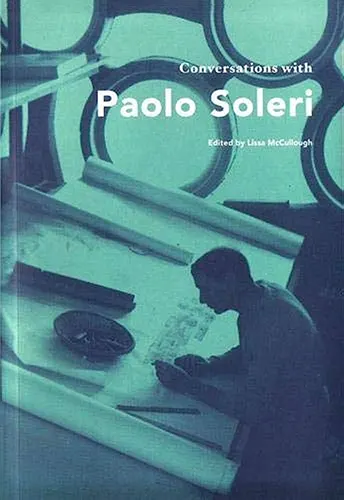
Conversations with Paolo Soleri
Paolo Soleri's architectural-philosophical thinking sets forth fundamental reformulations to address the globalizing world's most urgent environmental, urban infrastructural, and socio-ethical problems. In this book, Soleri's most recent ideas are distilled into an accessible overview for the general reader. Soleri proposes to transform our societal systems while raising sights to a radically long-term and humanistic perspective. Among the interrelated concepts outlined here are Soleri's highly original ideas of orchid and forest, the city as hyper-organism, the urban effect, and the love project. These inspiring ideas are acutely timely in light of current environmental trends: responding to global climate change, radically reducing oil dependence, embracing frugality and reduced consumption, while simultaneously confronting issues of suburban sprawl, urban renewal, smart land use, and wise food production.
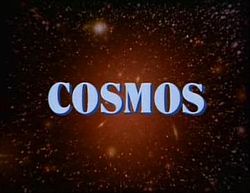
One Voice in the Cosmic Fugue
Sagan discusses the story of the Heike crab and artificial selection of crabs resembling samurai warriors, as an opening into a larger discussion of evolution through natural selection (and the pitfalls of intelligent design). Among the topics are the development of life on the Cosmic Calendar and the Cambrian explosion; the function of DNA in growth; genetic replication, repairs, and mutation; the common biochemistry of terrestrial organisms; the creation of the molecules of life in the Miller-Urey experiment; and speculation on alien life (such as life in Jupiter's clouds). In the Cosmos Update ten years later, Sagan remarks on RNA also controlling chemical reactions and reproducing itself and the different roles of comets (potentially carrying organic molecules or causing the Cretaceous–Paleogene extinction event).

The Backbone of Night
Carl Sagan teaches students in a classroom in his childhood home in Brooklyn, New York, which leads into a history of the different mythologies about stars and the gradual revelation of their true nature. In ancient Greece, some philosophers (Aristarchus of Samos, Thales of Miletus, Anaximander, Theodorus of Samos, Empedocles, Democritus) freely pursue scientific knowledge, while others (Plato, Aristotle, and the Pythagoreans) advocate slavery and epistemic secrecy.
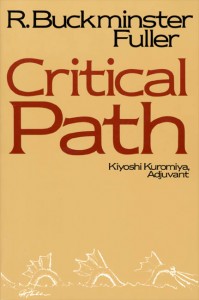
Critical Path
Critical Path is Fuller’s master work—the summing up of a lifetime’s thought and concern—as urgent and relevant as it was upon its first publication in 1981. The book details how humanity found itself in its current situation—at the limits of the planet’s natural resources and facing political, economic, environmental, and ethical crises. The crowning achievement of an extraordinary career, Critical Path offers the reader the excitement of understanding the essential dilemmas of our time and how responsible citizens can rise to meet this ultimate challenge to our future.
Does Matter Create Consciousness?
Many Eastern views of reality posit that it is consciousness that lies at the foundation of existence, not the material world.
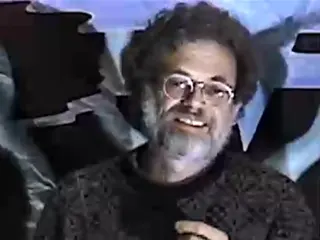
Dreaming Awake at the End of Time
Join Terence for an eclectic think along the deconstruction of the deepening worldwide weirdness. With his characteristic hope and humor, McKenna examined time and its mysteries, the nature of language, the techniques of ecstasy, high technology and virtual cyberspace, the role of hallucinogenic plants in shamanism and the evolution of human cultures, and the foundations of postmodern spirituality.
Dynamics of Hyperspace
Abraham and McKenna explore the limitations of traditional maps of consciousness, like those of Freud and Jung, in understanding psychedelic experiences. They propose that psychedelics offer access to a hyperspace beyond the human dimension, requiring new languages and metaphors to map and share these experiences. They discuss the role of consciousness evolution, potential guidance from higher intelligence, and the challenges and opportunities presented by technology and social structures in navigating this uncharted territory.
Economic Possibilities for our Grandchildren
Keynes argues that due to technological advancements and capital accumulation, the economic problem of scarcity will be solved within a century, ushering in an age of abundance. He predicts higher living standards, shorter workweeks, and a shift in moral values away from the love of money. However, he cautions that this transition will be challenging, requiring society to find new purpose beyond subsistence.
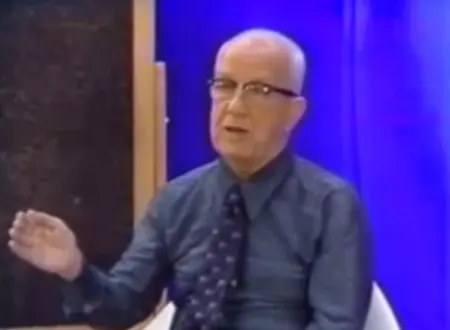
Everything I Know
Like an omniscient sage, Fuller weaves an epic tapestry tracing technology's ascent from ancient days when muscle reigned to modern times where mind ascends the throne. With synergy's secret wisdom, he foretells an era free from want, where loving logicians lead, and politics and war recede into obscurity's abyss. Yet this new day tarries, tangled in tradition's tenacious tendrils. So with urgent eloquence, Fuller implores enlightened minds to sever these bonds and share synergy's symphony, that all may know life lifted to its zenith through tool and thought's triumphant tryst.

Everything I Know
This session is all about technology's promise to lift humanity. Like a captain navigating toward undiscovered lands, Fuller charts how innovations—from ships to refrigeration to medicine—brought new worlds into reach. Now technology beckons us to uncharted abundance. If employed for life, not war, it can free all people to pursue their highest aspirations. Fuller inspires us to reclaim technology's power and unleash humanity's potential.

Everything I Know
Ever wondered how everything connects in the grand scheme of things? Buckminster Fuller unveils the universe's hidden order in the sixth part of this series. He challenges conventional geometry, revealing the power of spheres and the surprising truth about triangles. He dives into the building blocks of nature, showing how spheres and spaces interact to form the structures we see around us. Fuller even delves into our senses, demonstrating their interconnectedness and revealing the surprising limitations of sight. Get ready to see the world in a whole new way—the Fuller way!
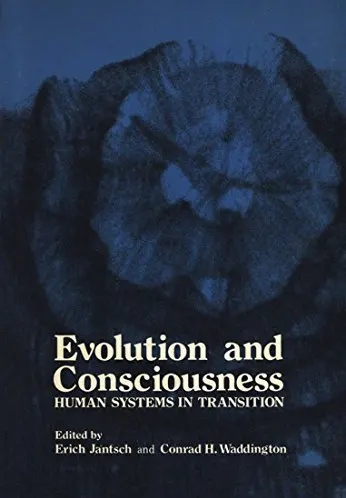
Evolution and Consciousness
Evolution and Consciousness is one of the first, still rare, truly transdisciplinary books: it deals with a totality, not a sector of it. Therefore, it defies any disciplinary labeling. It is a scientific book, yet also deals with topics until now reserved for books of mysticism and poetry. It bridges the gap between science and other forms of knowledge. It deals not just with scientific questions, but with existential questions which concern all mankind, such as the meaning of life and the evolutionary significance of human design and action. It challenges the whole dominant Western world view: process thinking instead of structural thinking, dynamic instead of static, evolution instead of permanency.
Evolution of the Idea of Evolution
Teilhard reveals that evolution has outgrown its origins as a mere biological theory to become the universe’s own heartbeat—a vast, unfolding process shaping matter, mind, and meaning alike. Once we thought ourselves its observers; now we awaken as its apex and instrument, the conscious spearpoint of creation’s long ascent.
Future of Art
Terence McKenna prophesies a future where technology obliterates barriers between imagination and reality. Psychedelics combined with VR could unleash humanity’s collective artistic genius. AI superintelligence may already be awakening on the internet, rendering us obsolete—or granting us godlike abilities to merge with the planetary mind. McKenna envisions downloading consciousness into machines, uplifting animal sentience, and the human diaspora splintering into cyber-cultures. While uncertain outcomes loom, he beckons us toward an unconstrained existential canvas where biology and technology intertwine to manifest our wildest psychic dreams.
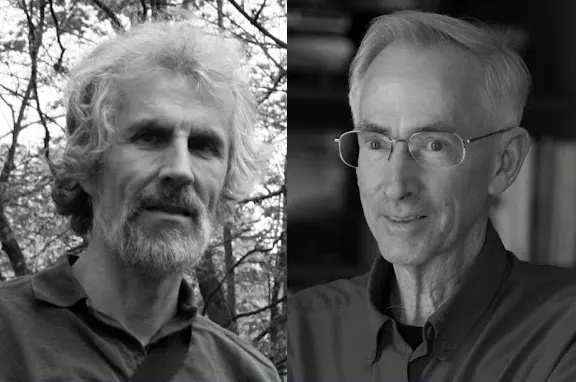
Glimpsing the Global Brain
Complex systems theorist Heylighen and evolutionary biologist Wilson discuss a possible phase transition of humanity in which the members of our species become neurons in a planetary brain, utilizing the Internet as a shared exocortex.
Having Archaic and Eating it Too
Feeding back to the psychedelic community of Los Angeles, Terence McKenna delivers colorful and astounding visual transformations. He weaves a galactic tapestry of art-tickled articulations of the history and future of psychedelic alchemy, the government/culture clash, and the surging general ordering of chaos from UFOs to archaic shamanism. This recording will amuse anyone interested in subjects ranging from eco-tourism to techno-junkies.
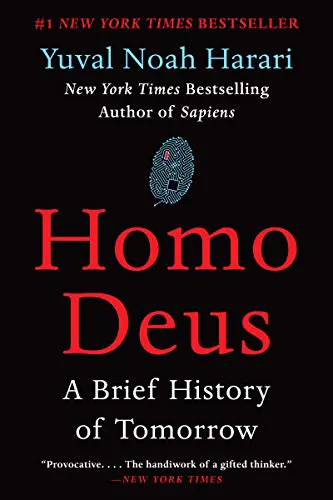
Homo Deus
Yuval Noah Harari envisions a not-too-distant world in which we face a new set of challenges. He examines our future with his trademark blend of science, history, philosophy, and every discipline in between. Homo Deus explores the projects, dreams and nightmares that will shape the twenty-first century—from overcoming death to creating artificial life. It asks the fundamental questions: Where do we go from here? And how will we protect this fragile world from our own destructive powers? This is the next stage of evolution.
Imagination in the Light of Nature
Terence claims that “the boundless creativity of the human mind will be tapped into and come to our aid.” His bold statement is followed by an inspirational pep-talk about how miraculous the appearance of consciuosness in this universe is, and what a valuable potential humans represent in future cosmic evolution.
In Search of the Original Tree of Knowledge
Terence shares his “Stoned Ape” theory—that psilocybin mushrooms drove human evolution by enhancing cognition and fostering social cohesion. He explores psychedelics’ power to dissolve the ego, open the Gaian mind, and guide us towards transcendence. McKenna also delves into the fractals of time, the Santa Claus-Amanita connection, and the radical implications of his Timewave Zero theory. A captivating look at psychedelics, consciousness, and the mysteries of the universe!
In the Valley of Novelty
Journeying through multiple dimensions of psychedelic consciousness, Terence McKenna's visionary weekend workshop invites us on an entheogenic voyage to the frontiers of the mind and its imminent conquering of matter. Blending scientific insights with shamanic wisdom, McKenna argues that natural plant medicines like psilocybin and DMT provide portals into mystical realms and alien dimensions, catalyzing revelations about nature, reality, and the human psyche. He urges us to courageously explore these consciousness-expanding substances, seeking the gratuitous beauty and truths they unveil. For McKenna, the psychedelic experience holds secrets to our world and ourselves—if only we dare lift the veil.
Interview with Erik Davis
In his final reflections, Terence McKenna explains how the cosmos is a plant-powered data download driving evolution toward a spiritualized future of the Omega Point. Psychedelics are the manual—get to work!
Lucifer and Ahriman
We live in critical, apocalyptic times. In these five lectures, given just after the end of the First World War and in the midst of trying to effect the social-political life of his times with the movement for a threefold social order, Steiner focuses on the vital task of developing a right orientation toward the spirit: a free spiritual life. With great compassion and understanding he shows how humanity must walk a conscious middle path between the two “tempting” powers of Lucifer and Ahriman. He tells of the incarnation of Lucifer in the third millennium BCE, from which flowed not only the wisdom of paganism but also the intellectual consciousness we enjoy today. Ahriman is shown to be approaching humanity through phenomena such as materialism, nationalism, and literalism in preparation for his incarnation in the millennium now opening. It must not be thought, however, that these two powers work apart: on the contrary, they work more and more together. Our task is to hold them in balance, continually permeating the one with the other. Doing this requires a new form of conscious spirituality.
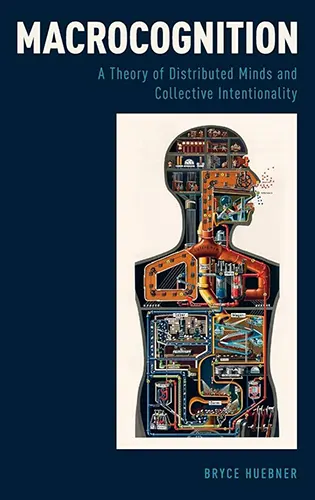
Macrocognition
Bryce Huebner develops a novel approach to distributed cognition and collective intentionality, arguing that genuine cognition requires the capacity for flexible, goal-directed behavior enabled by integrated representational systems. It posits that collective mentality should be ascribed where specialized subroutines are integrated to yield group-relevant, goal-directed behavior. The approach reveals that there are many kinds of collective minds, some more akin to those of honeybees or cats than humans. It challenges traditional notions of collective intentionality, suggesting that groups are unlikely to be "believers" in the fullest sense, shedding new light on questions of collective intentionality and responsibility.
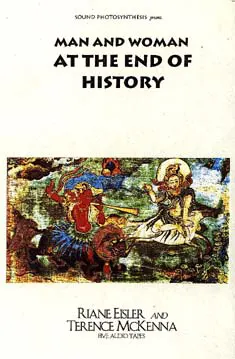
Man and Woman at the End of History
This seminar examined how one of the most fundamental human relationships, that between male and female, shapes our relationship to technology and ultimately to culture and nature. It looked at the forms of relationship between women and men in the shift from a society based on domination to one based on partnership. This is an exploration of how feminism, technology, and the telling of a new story will contribute to rescuing us from history.
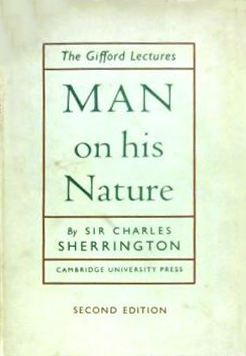
Man on his Nature
Sherrington had long studied the 16th century French physician Jean Fernel, and grew so familiar with him that he considered him a friend. In the years of 1937 and 1938, Sherrington delivered the Gifford lectures at the University of Edinburgh; these focused on Fernel and his times, and came to form the principal content of Man on His Nature. The book was released in 1940, and a revised edition came out in 1951. It explores philosophical thoughts about the mind, the human existence, and God, in connection with natural theology. In his ideas on the mind and cognition, Sherrington introduced the idea that neurons work as groups in a "million-fold democracy" to produce outcomes rather than with central control.
Man's Place in the Universe
In this unusually personal essay, Teilhard speaks almost across the table, inviting us to rethink our cosmic standing. He shows how humanity, once dwarfed by vast space and tiny particles, regains significance through a third dimension of reality: complexity. As matter organizes itself into ever-deeper centers, consciousness rises—and in us, becomes self-aware. Humanity is not a cosmic accident, he suggests, but the universe awakening to itself and preparing its next leap.
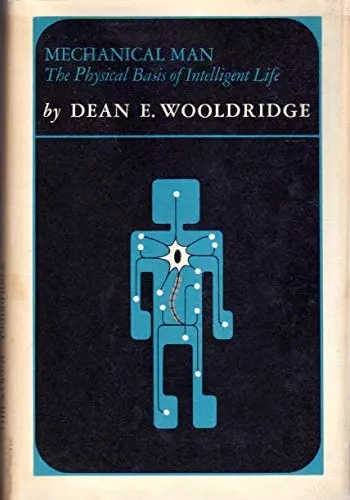
Mechanical Man
A report on modern attempts to account for the origin and properties of living organisms, including man, by means of the principles of physics. It concludes that biology is a branch of physical science, and man is only (and astoundingly) a complex kind of machine.
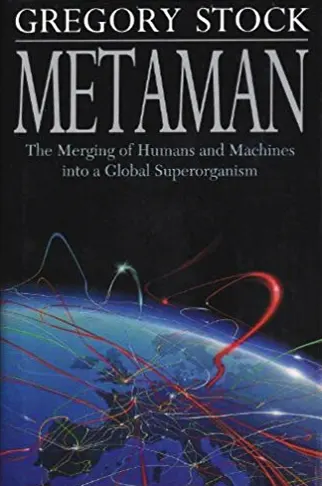
Metaman
In this visionary book, Gregory Stock gives us a new way of understanding our world and our future. He develops the provocative thesis that human society has become an immense living being: a global superorganism in which we humans, knitted together by our modern technology and communication, are like the cells in an animal's body. Drawing on impressive research, Stock shows this newly formed superorganism to be more than metaphor: it is an actual living creature, which he has named Metaman, meaning beyond and transcending humans.
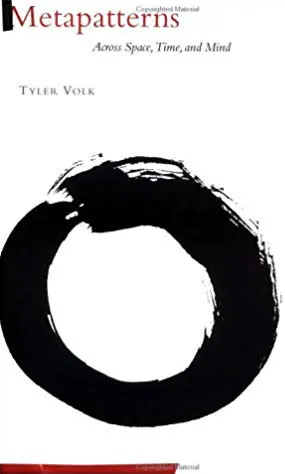
Metapatterns
In the interdisciplinary tradition of Buckminster Fuller’s work, Gregory Bateson’s Mind and Nature, and Fritjof Capra’s Tao of Physics, Metapatterns embraces both nature and culture, seeking out the grand-scale patterns that help explain the functioning of our universe. Metapatterns begins with the archetypal patterns of space, both form-building and relational. Tyler Volk then turns to the arrows, breaks, and cycles that infuse the workings of time. With artful dexterity, he brings together many layers of comprehension, drawing on an astounding range of material from art, architecture, philosophy, mythology, biology, geometry, and the atmospheric and oceanographic sciences. Richly illustrating his metapatterns with a series of sophisticated collages prepared for this book, Volk offers an exciting new look at science and the imagination. As playful and intuitive as it is logical and explanatory, Metapatterns offers an enlightening view of the functional, universal form in space, processes in time, and concepts in mind.
Mind As Society
Conscious intelligence may be viewed as a computer system composed of many smaller parallel processing programs. Marvin Minsky, Ph.D., is one of the acknowledged founders of the mathematical theory of computation, artificial intelligence, and robotics. He argues that understanding the individual as a very sophisticated machine actually affirms human dignity.
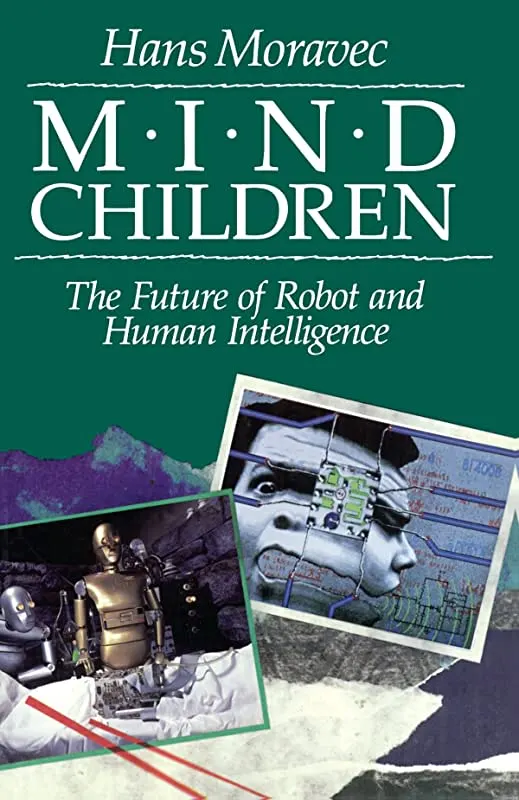
Mind Children
Imagine attending a lecture at the turn of the twentieth century in which Orville Wright speculates about the future of transportation, or one in which Alexander Graham Bell envisages satellite communications and global data banks. Mind Children, written by an internationally renowned roboticist, offers a comparable experience: a mind-boggling glimpse of a world we may soon share with our artificial progeny. Filled with fresh ideas and insights, this book is one of the most engaging and controversial visions of the future ever written by a serious scholar.
Mind and Matter
Based on the Tarner Lectures delivered at Trinity College in Cambridge, Mind and Matter is Erwin Schrödinger's investigation into a relationship which has eluded and puzzled philosophers since the earliest times.
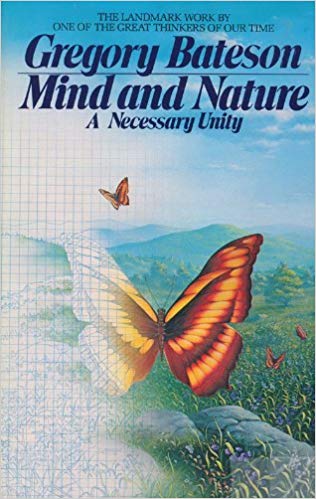
Mind and Nature
Renowned for his contributions to anthropology, biology, and the social sciences, Bateson asserts that man must think as Nature does to live in harmony on the earth and, citing examples from the natural world, he maintains that biological evolution is a mental process.
Mushrooms, Evolution, and the Millennium
Terence McKenna asks the fundamental question concerning natural hallucinogens: is it an accident of nature that certain plants and mushrooms can alter human awareness in profound ways? He argues that man and hallucinogenic plants and mushrooms have co-evolved. These botanicals provide a way for people to experience their spiritual nature, and throughout history have been used by shamans whose function is to enter altered states in order to perceive the spiritual causes behind ordinary reality. Delivered at the Masonic Temple during a gathering of the Los Angeles Mycological Society.
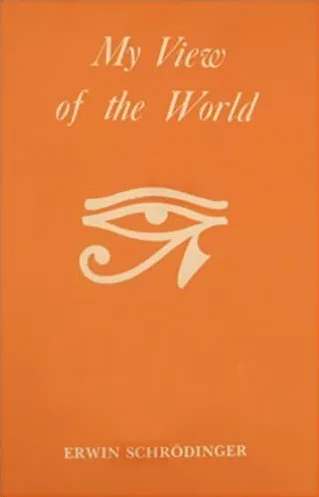
My View of the World
A Nobel prize winner, a great man and a great scientist, Erwin Schrödinger has made his mark in physics, but his eye scans a far wider horizon: here are two stimulating and discursive essays which summarize his philosophical views on the nature of the world. Schrödinger's world view, derived from the Indian writings of the Vedanta, is that there is only a single consciousness of which we are all different aspects. He admits that this view is mystical and metaphysical and incapable of logical deduction. But he also insists that this is true of the belief in an external world capable of influencing the mind and of being influenced by it. Schrödinger's world view leads naturally to a philosophy of reverence for life.
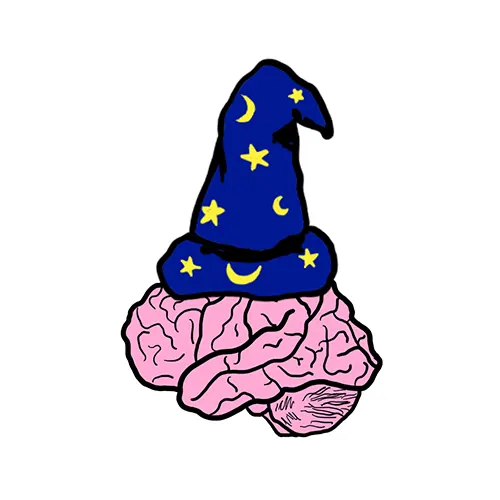
Neuralink and the Brain's Magical Future
What if your brain could seamlessly connect to a computer, enhancing your intelligence and unlocking new abilities? Tim Urban dives into Neuralink, Elon Musk’s ambitious project to merge minds with AI. Our brains, while remarkable, are slow compared to machines—Neuralink’s neural lace technology could change that. But this isn’t just about creating cyborgs; it’s about overcoming human limitations and shaping the future of intelligence itself. Are we on the verge of a true symbiosis with AI?
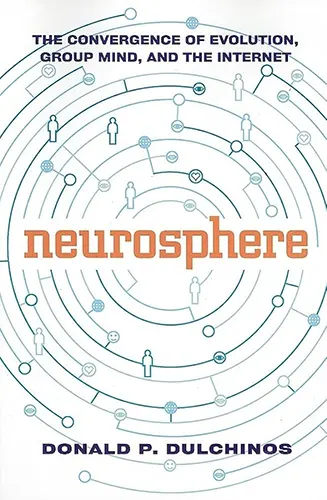
Neurosphere
According to Donald Dulchinos, the real action on the Internet isn’t in the realm of commerce. It is, plain and simple, in the realm of religion. But not exactly that old-time religion. This book is about the spiritual impact of our increasing ability to communicate quickly and with enhanced evolution. It's about our search for meaning, our hunger for a glimpse at humanity's future development in which, frighteningly or excitingly, the trend is clearly toward increasing integration of telecommunications and information technology with the body itself. Electronic prosthetics, direct neural implants, and the brain's control of electronic and mechanical limbs move the boundary that used to exist between human and machine to some undefined frontier inside our bodies, our brains, and, perhaps, our minds.
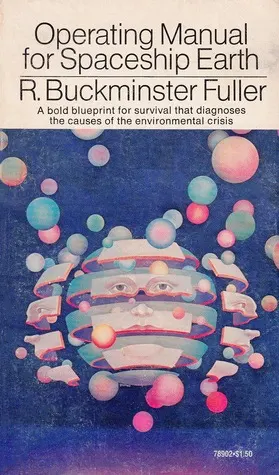
Operating Manual for Spaceship Earth
In this essay on man, Mr. Fuller expresses what may well be his penultimate view of the human condition. Here, in a mood at once philosophical and involved, he traces humanity's intellectual evolution and weighs our capability for survival on this magnificent craft, this Spaceship Earth, this superbly designed sphere almost negligible in dimension compared to the great vastness of space. Mr. Fuller is optimistic that we will survive and, through research and development and increased industrialization, generate wealth so rapidly that we can do very great things. But, he notes, there must be an enormous educational task successfully accomplished right now to convert our tendency toward oblivion into a realization of his potential, to a universe-exploring advantage from this Spaceship Earth.
Our Cyberspiritual Future
Terence holds court on our civilization's journey toward the eschaton at this weekend Esalen gathering. He riffs on topics from psychedelic states and alien intelligences to time travel and VR. McKenna argues we're evolving toward an unimaginable state of accelerating novelty, propelled by advancing technology. A mind-expanding ride for the open-minded psychonaut or armchair traveler, guided by one of the twentieth century's most eclectic thinkers.

The Web of Life (Part 2)
A deep dive into the cosmic game of life. Alan says existence is an interwoven, rhythmic dance veiled in illusion, but when we peek behind the veil, we find life is actually playful—so come on in and join the party!
Physics of Life, Time, Complexity, and Aliens
Sara Walker and Lex Fridman explore life’s grand mysteries, touching on the nature of existence and the origins of life to the potential of artificial intelligence and the future of consciousness. Walker’s unique perspective challenges conventional wisdom, inviting us to reconsider our place in the cosmic dance.
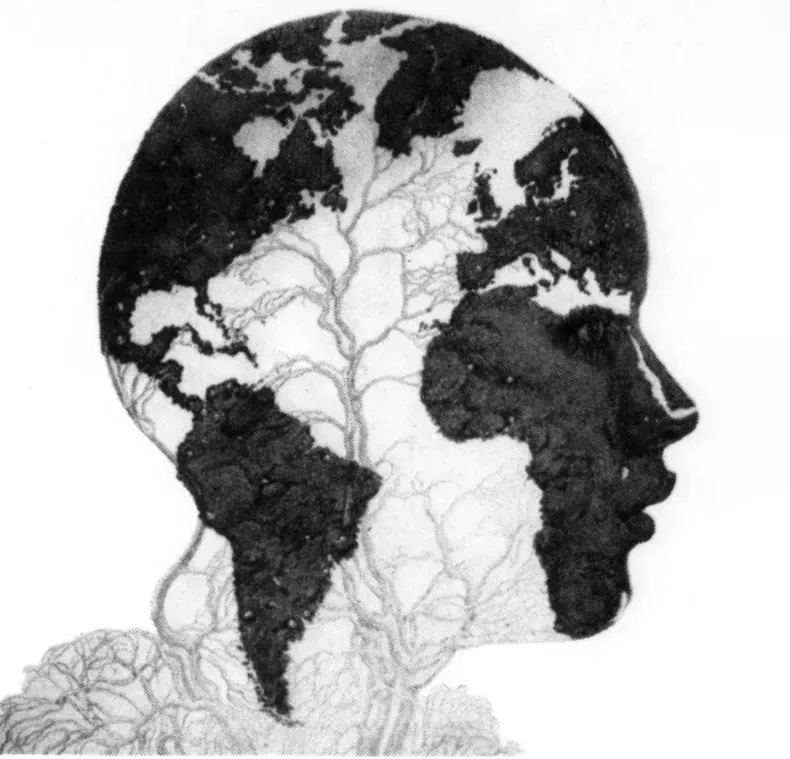
Plan, Plant, Planet
McKenna urges us to look at plants more deeply and find within their biological organization a model for sustainable modern civilization.
Q and A With God
After discussing the nature of consciousness, the human mind, and the philosophical viewpoint that every person is God, Alan Watts assumes the role of God himself for the latter half of this lecture, answering each question his audience serves with wit and insight.
Reflection of Energy
Teilhard de Chardin sees human reflection as an evolutionary force escaping entropy's grasp. Emerging from life's intrinsic complexity, reflection leads mankind on an irreversible journey of deepening interiority. Through convergence and collective self-reflection, we approach a sacred point of supreme arrangement and unity. Teilhard argues that to fully encompass life's mystery in science, the reflection of energy must join conservation and dissipation as key principles. Understanding reflection's role illuminates both human destiny and the cosmos' underlying divinity.
Ripples and Puddles
Robotics pioneer Hans Moravec traces the evolution of artificial intelligence, contrasting the "shallow ripples" of reasoning programs with the "deep puddles" of perception systems. Though reasoning AIs currently outperform humans on some tasks, Moravec contends they cannot match the murky depths of the subconscious mind. Instead, he foresees a new generation of increasingly capable consumer robots, their lizard- then mammal-like brains modeled on biology. Passing through stages akin to evolution, Moravec argues market forces will drive these machines to one day exceed human intelligence.
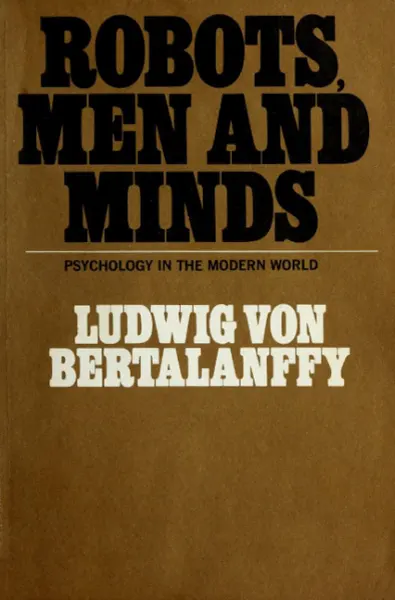
Robots, Men, and Minds
Based on lectures delivered as The Inaugural Lectures in The Heinz Werner Lecture Series at Clark University (Worcester, Mass.) in January 1966, the book introduces new conceptions of humans and their world. After discussing the advantages and drawbacks of humanity's propensity for the symbolic construction of reality, it focuses on the systems approach to an understanding of the species. The author warns against the common error of identifying cybernetics with general systems theory. No matter how complex the cybernetic system, it "can always be resolved into feedback circuits" and thought of in terms of "linear causality." The regulative behavior of general systems is determined by goal-directed, dynamic interaction between many forces and variables in an open system. Bertalanffy points out that "no comprehensive theory of systems exists today." As a model, however, the approach has many advantages, such as obviating the need for the "ghost in the machine" and suggesting some solutions to the mind-body problem.
Sacred Plants as Guides
Terence McKenna takes us on a journey through history, exploring the powerful role of psychedelic plants in human evolution and consciousness. He argues that these plants offer a gateway to hidden realms of reality, inhabited by enigmatic entities and offering profound insights. Reconnecting with these ancient allies could be the key to solving our modern problems and unlocking a brighter future for humanity.
Seeking the Stone
What if psychedelic plants sparked humanity’s awakening? McKenna (speaking at the 1991 Whole Life Expo) contends these mind-altering substances dissolved the egos of early humans, bonded communities, and revealed cosmic consciousness, catalyzing rapid cultural progress. He asserts modern society suffers from severing this link to nature and spirit, and calls us to reclaim this “archaic revival” before consumerism leads civilization over the brink.
Self and Other
Alan coaxes the listener’s mind to simultaneously zoom in and zoom out in an effort to demonstrate that identity is merely an intellectual hallucination. Instead, personal identity is fluid, ranging from one’s constituent atoms and molecules all the way out to the farthest bounds of cosmic existence. Overcoming this mental myopia leads to greater harmony, contentment, and a desire to playfully dance with this universal energy system.
Shedding the Monkey
Presented at the Shared Visions bookstore.
Simulation, Consciousness, Existence
Like organisms evolved in gentle tide pools, who migrate to freezing oceans or steaming jungles by developing metabolisms, mechanisms, and behaviors workable in those harsher and vaster environments, our descendants, able to change their representations at will, may develop means to venture far from the comfortable realms we consider reality into arbitrarily strange worlds. Their techniques will be as meaningless to us as bicycles are to fish, but perhaps we can stretch our common-sense-hobbled imaginations enough to peer a short distance into this odd territory.
Studio 2 Interview
Carl Sagan as he unveils the profound insignificance of Earth within the vast expanse of the universe. He challenges our anthropocentric biases, urging us to embrace a more humble perspective. Sagan emphasizes the interconnectedness of life, highlighting the shared ancestry between humans and other species. He advocates for space exploration as a means of safeguarding humanity's future while emphasizing the importance of scientific literacy for navigating the challenges of our time.
Taxonomy of Illusion
This lecture explores the role of psychedelics in human evolution, consciousness expansion, and addressing global crises. Terence argues that psychedelics dissolved boundaries among our ancestors, fostering human traits like language and altruism. He advocates for their responsible use to transcend cultural illusions, enhance creativity, and catalyze the radical changes needed to confront environmental catastrophe and birth a new human order.
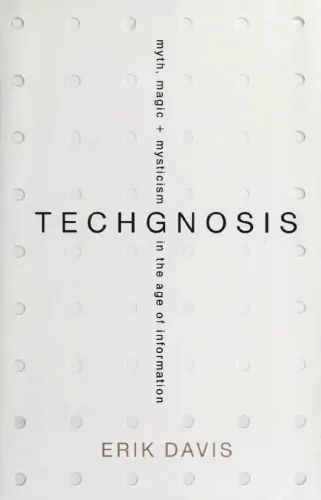
TechGnosis
How does our fascination with technology intersect with the religious imagination? While the realms of the digital and the spiritual may seem worlds apart, esoteric and religious impulses have in fact always permeated (and sometimes inspired) technological communication. Erik Davis uncovers startling connections between such seemingly disparate topics as electricity and alchemy; online role-playing games and religious and occult practices; virtual reality and gnostic mythology; programming languages and Kabbalah. The final chapters address the apocalyptic dreams that haunt technology, providing vital historical context as well as new ways to think about a future defined by the mutant intermingling of mind and machine, nightmare and fantasy.
Technium Unbound
What comes after the Internet? What is bigger than the web? What will produce more wealth than all the startups to date? The answer is a planetary superorganism comprised of 4 billion mobile phones, 80 quintillion transistor chips, a million miles of fiber optic cables, and 6 billion human minds all wired together. The whole thing acts like a single organism, with its own behavior and character—but at a scale we have little experience with. This is more than just a metaphor. Kevin Kelly takes the idea of a global superorganism seriously by describing what we know about it so far, how it is growing, where its boundaries are, and what it will mean for us as individuals and collectively.
Teilhard de Chardin in the Age of Ecology
Jane Blewett interviews Thomas Berry about Pierre Teilhard de Chardin's philosophy.
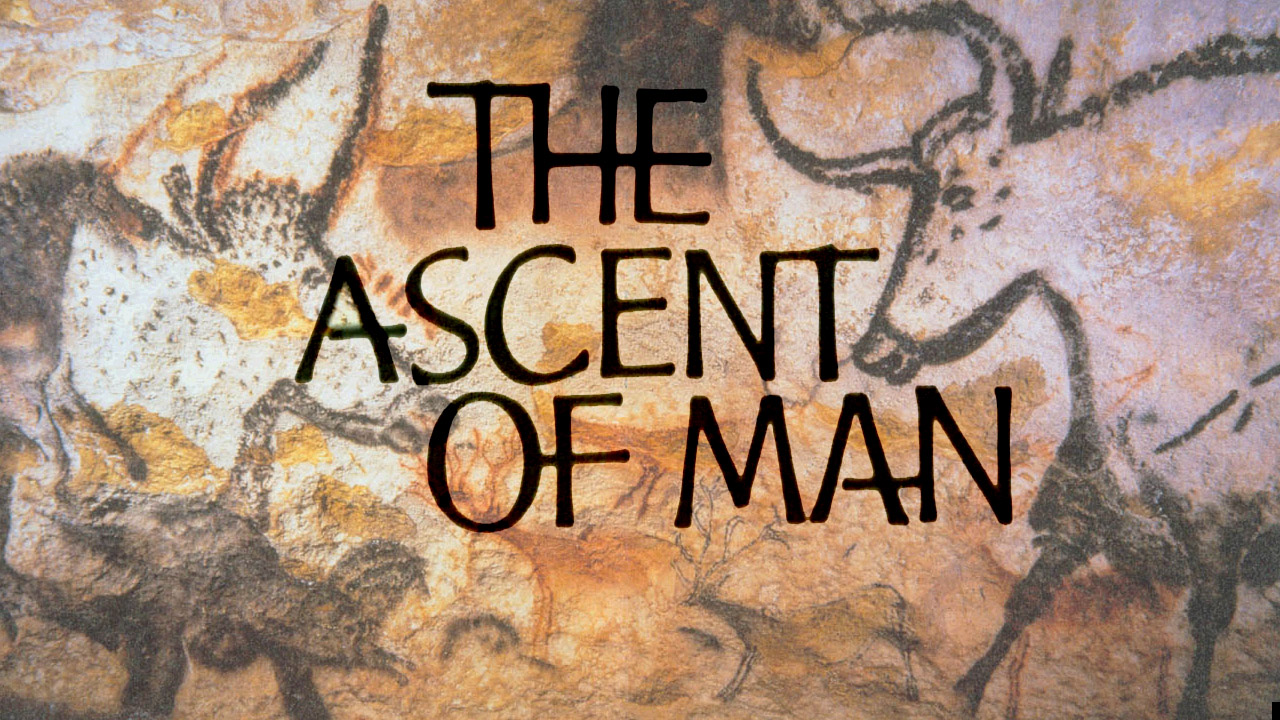
Lower Than the Angels
Jacob Bronowski begins his series by examining intellectual, cultural, and scientific breakthroughs in man's four-million-year evolution, and demonstrates the importance of new ideas and how they transcend other historical events in their cumulative, irreversible effects.

World Within World
In the vaults of ancient Polish salt mines Bronowski embarks on a journey to the hidden world inside the atom. He traces the history of the men and the ideas that made twentieth-century physics the greatest achievement of the human imagination.
The Biosphere and the Noösphere
A general intellectual outlook of one of the most remarkable scientific leaders of the early twentieth century, focusing on a predicted historical and planetary phase transition in which humanity becomes a united force.
The Birth of a New Humanity
Terence McKenna explored themes of accelerating complexity, impending radical shifts in human reality, and the continuity between our changing relationship with Earth and a new cosmic modality transcending our fragile ecosystem. He posited history as a self-limiting 25,000-year process reaching its climax, suggesting individual acts of “midwifery” can ease this epochal transition. He also cautioned about combining psychoactive compounds without proper expertise.
The Christic
The universe is evolving toward a profound unity where science and spirituality merge, Teilhard says. He envisions human consciousness and the cosmos intertwined, sparking a transformative energy that unites all life in a new, dynamic spirituality—an awakening that promises to ignite our collective future.
The Co-Evolution of the Extended Mind and the Internet
We don’t need brain implants to become cyborgs—we already are. Halpin argues that technology and humans have co-evolved, extending our minds beyond biology. Using the Extended Mind Hypothesis, he shows how everyday tools like smartphones integrate with cognition, shaping thought and memory. Rather than a futuristic AI takeover, we’re already merging with machines in a subtler, more profound way.
The Computational Boundary of a “Self”
All epistemic agents physically consist of parts that must somehow comprise an integrated cognitive self. Biological individuals consist of subunits (organs, cells, and molecular networks) that are themselves complex and competent in their own native contexts. How do coherent biological Individuals result from the activity of smaller sub-agents?
The End of the Species
Teilhard de Chardin reimagines humanity’s journey, shifting from Darwinian progress to a bold vision of transformation. Confronting the shadow of extinction, he argues that humanity is unique—destined to unite and evolve into a higher state of collective consciousness. Beyond materialism, our future lies not in endless survival but in a breakthrough that transcends time and space. This spiritual awakening offers hope, turning despair into a promise of rebirth and revealing humanity’s true purpose in the cosmos.
The Energy of Evolution
Teilhard de Chardin sees evolution not as blind biology but as energy awakening to thought. Humanity inaugurates a new phase: self-directed, convergent, planetary, driven less by survival than by the magnetism of the future. Evolution’s true axis is consciousness itself, pulled toward an ultimate point of unity where being and becoming fuse.
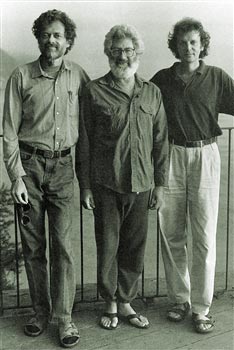
The Evolutionary Mind
What could have been the cause for the breakthrough in the evolution of human consciousness around 50,000 years ago? Part of the Trialogues at the Edge of the Unthinkable held at the University of California.
The Global Superorganism
The organismic view of society is updated by incorporating concepts from cybernetics, evolutionary theory, and complex adaptive systems. Global society can be seen as an autopoietic network of self-producing components, and therefore as a living system or “superorganism”.
The Human Rebound of Evolution and its Consequences
This essay follows Teilhard's train of thought on the aftermath of a potential fusing-together of humanity.
The Human Social Organism
Wilson explores the intersection of evolutionary biology and religion, proposing that religion, despite its seemingly irrational aspects, serves as a powerful engine for human cooperation. He uses diverse examples, including Calvinism in Geneva, the Water Temple System of Bali, and even Jainism, to highlight how religious beliefs and practices, regardless of how otherworldly they may seem, often translate into practical benefits for the entire religious group. This “secular utility” of religion, as sociologist Émile Durkheim called it, suggests that religions, by promoting cooperation and morality, can be seen as adaptations that increase a group’s survival and reproduction.
The Nature of Living Systems
General systems behavior theory is a set of related definitions, assumptions, and propositions which deal with reality as an integrated hierarchy of organizations of matter and energy. General systems behavior theory is concerned with a special subset of all systems: the living ones. Even more basic to this presentation than the concept of “system” are the concepts of “space,” “time,” “matter,” “energy,” and “information,” because the living systems discussed in this paper exist in space and are made of matter and energy organized by information.
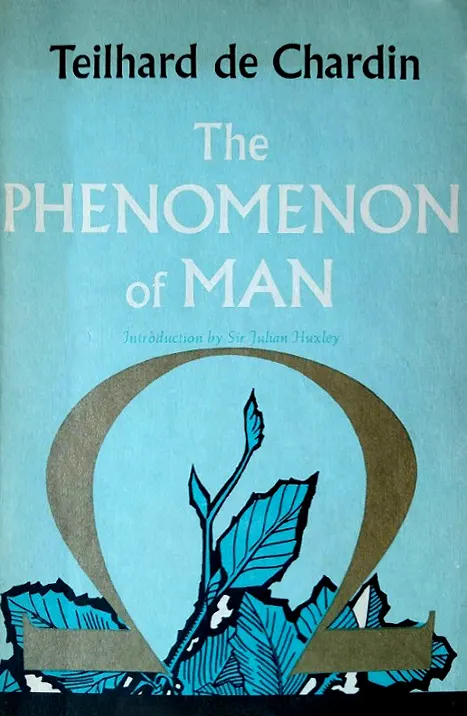
The Phenomenon of Man
Visionary theologian and evolutionary theorist Pierre Teilhard de Chardin applied his whole life, his tremendous intellect, and his great spiritual faith to building a philosophy that would reconcile religion with the scientific theory of evolution. In this timeless book (whose original French title better translates to “The Human Phenomenon”), Teilhard argues that just as living organisms sprung from inorganic matter and evolved into ever more complex thinking beings, humans are evolving toward an “omega point”—defined by Teilhard as a convergence with the Divine.
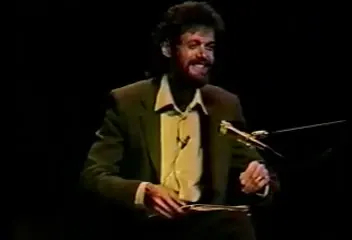
The Psychedelic Society
One of Terence's early presentations at Esalen—shocking, astounding, and amusing his audience with outlandish ideas.
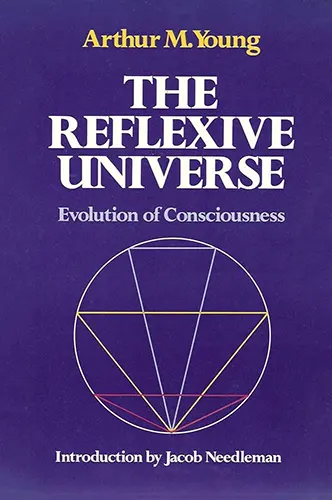
The Reflexive Universe
Integrating the findings of modern science with ancient wisdom, this seminal work offers a paradigm for resolving the schism between spirit and matter. Arthur Young’s Theory of Process provides a model for the evolution of consciousness out of light (the quantum of action), offering hope for an age in search of value and meaning.
The Rites of Spring
Terence McKenna theorizes that ingestion of psilocybin mushrooms catalyzed the emergence of human self-reflection. He argues that psilocybin enhanced visual acuity and symbol processing in early hominids, leading to the development of human consciousness. Psychedelic plants can accelerate cultural change by deconditioning rigid mindsets, according to McKenna. He envisions a future where machines have consciousness and visible language communicates meaning directly. Ultimately, McKenna foresees the impending transformation of humanity through imagination and connection with the mysterious Other.
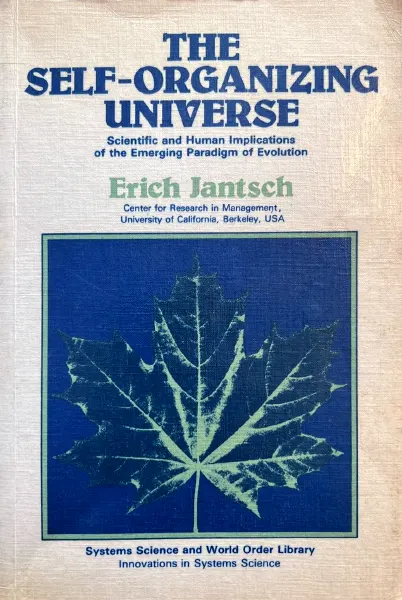
The Self-Organizing Universe
The evolution of the universe—ranging from cosmic and biological to sociocultural evolution—is viewed in terms of the unifying paradigm of self-organization. The contours of this paradigm emerge from the synthesis of a number of important concepts, and provide a scientific foundation to a new world-view which emphasizes process over structure, nonequilibrium over equilibrium, evolution over permanency, and individual creativity over collective stabilization. The book, with its emphasis on the interaction of microstructures with the entire biosphere, ecosystems etc., and on how micro- and macrocosmos mutually create the conditions for their further evolution, provides a comprehensive framework for a deeper understanding of human creativity in a time of transition.
Myth of Myself
The ferryboat philosopher riffs on how we're not skin bags with an “I” inside, but the whole cosmos peeking out! Says we feel separate because we ignore our cosmic “floodlight” consciousness. But we're waves in the ocean, apples on the tree. Realizing this brings real joy.
The Transformation and Continuation in Man of the Mechanism of Evolution
How does humanity fit into evolution's arc? Teilhard de Chardin argues that we represent not an endpoint, but an intensification of evolution's complexity and consciousness. As technology and social bonds grow, he sees not disaster but hope—perhaps mankind is evolving toward an “ultra-hominization,” a perfected global mind.
The Ultimate Revolution
Huxley outlines what society’s ultimate revolution would look like: a scientific dictatorship where people will be conditioned to enjoy their servitude, and who will pose little opposition to the ruling oligarchy, as he puts it. He also takes a moment to compare his book Brave New World to George Orwell’s 1984, and considers the technique in the latter too outdated for actual implementation.
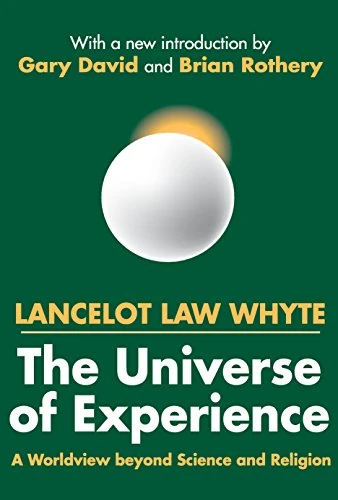
The Universe of Experience
Modern experience forces philosophy and social thought to confront the basic problems of value. Is this life worth caring about? How can we find a way between the deceit of fanatical belief and despair? In the view of Lancelot Law Whyte, the essential challenge to mankind today is an underlying nihilism promoting violence and frustrating sane policies on major social issues. Avoiding the seductive trap of utopianism, Whyte approaches this challenge by defining the terms of a potentially worldwide consensus of heart, mind, and will.
The Unreasonable Effectiveness of Mathematics in the Natural Sciences
The Richard Courant lecture in mathematical sciences delivered at New York University by physicist Eugene Wigner, in which he observes that a physical theory's mathematical structure often points the way to further advances in that theory and even to empirical predictions.
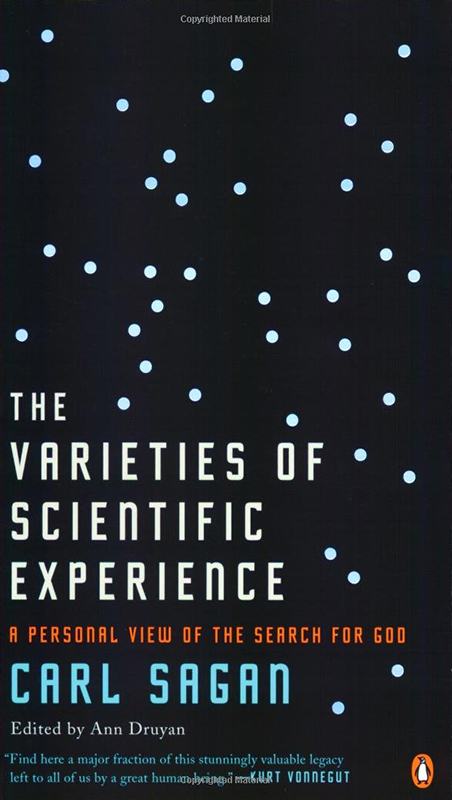
The Varieties of Scientific Experience
Carl Sagan's prescient exploration of the relationship between religion and science, and his personal search for God.
The Vision of a Better World
Two visionaries, Tom Munnecke and Barbara Marx Hubbard, engage in an uplifting dialogue exploring the emergence of human creativity and consciousness. They trace inspirations from mentors like Jonas Salk, who recognized futuristic possibilities in Hubbard, and Buckminster Fuller, who affirmed humanity's potential. Together they shine light on the crisis of our times as the birth pangs of a new civilization, calling us to connect with the creativity arising globally. Their exchange weaves threads of hope and positivity, envisioning a future where all people actualize their gifts in service of our world.

The World Wide Web and the Millennium
Seldom do we have an opportunity to test the accuracy of oracular predictions, but this fascinating conversation between two great thinkers has already proven to be right on target. Speculations include the future evolutionary development of the Internet, whether it is an embryonic intelligence, whether it will merge our minds into a planetary consciousness, or whether it is an alien brain waiting for humanity to cross an evolutionary threshold. Let the bard and the chaos theorist weave an exquisite cybernetic fantasy for you in this evening seminar.
The Zest for Living
Teilhard de Chardin’s Zest for Living reveals life’s deepest impulse—the will not just to survive, but to “super-live.” This inner drive fuels cosmic evolution toward greater consciousness. To sustain humanity’s future, he urges a renewal of faith and wonder—a universal spirituality that rekindles our passion for being and becoming.
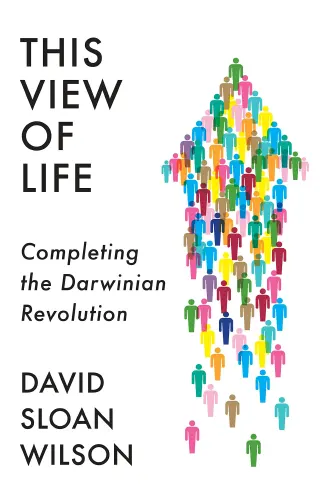
This View of Life
It is widely understood that Charles Darwin’s theory of evolution completely revolutionized the study of biology. Yet, according to David Sloan Wilson, the Darwinian revolution won’t be truly complete until it is applied more broadly—to everything associated with the words “human,” “culture,” and “policy.” In a series of engaging and insightful examples—from the breeding of hens to the timing of cataract surgeries to the organization of an automobile plant—Wilson shows how an evolutionary worldview provides a practical tool kit for understanding not only genetic evolution but also the fast-paced changes that are having an impact on our world and ourselves. What emerges is an incredibly empowering argument: If we can become wise managers of evolutionary processes, we can solve the problems of our age at all scales—from the efficacy of our groups to our well-being as individuals to our stewardship of the planet Earth.
Thusness
Alan Watts discusses the concept of "thusness" or "suchness" in Eastern philosophy, exploring the meaning of the Sanskrit word tathātā and its potential to help us cultivate a deeper sense of presence and awareness in our daily lives.
Understanding and Imagination in the Light of Nature
The Great Mystery whispers through psychedelics as it unfurls revelations beyond language’s grasp. Here, ego-bound shells crack open as cosmic minds reborn beyond confines of space and time. We thus commune with the endless Imagination—holographic spirit-stuff whereof worlds are wrought. Invariants of the eternal suffuse temporal shadow-play, the mundane ever aflame in subtler dimensions. All form awakens, ascends, drawn unto consummate transcendence as history’s fever dream blossoms into timeless infinitude.
Understanding the Chaos at History's End
Delivered at the end of McKenna’s first month as scholar-in-residence at Esalen, when he began a new phase in his public speaking career. This weekend workshop provides an early glimpse at Terence’s description of the looming “transcendental object at the end of time,” and the psychedelic insights which led him to become an oracle.
Vertigo at History's Edge
As we approach history's climax, McKenna heralds the inevitable complexification of existence. He foretells technology and pharmacology's fusion into higher consciousness and collective awakening through boundary dissolution. Still, the human spirit yearns freedom from constraints of belief, non-experience. McKenna beckons: reclaim your mind, body, and world! Destiny awaits our willful shaping. The cosmic hourglass empties; shall we awaken?
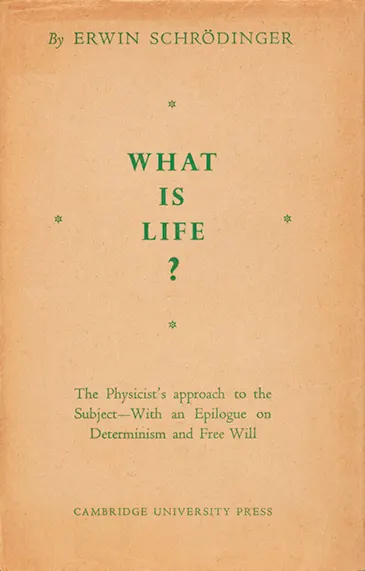
What Is Life?
This book was based on a course of public lectures delivered by Schrödinger in February 1943, under the auspices of the Dublin Institute for Advanced Studies at Trinity College, Dublin. The lectures attracted an audience of about 400, who were warned "that the subject-matter was a difficult one and that the lectures could not be termed popular, even though the physicist’s most dreaded weapon, mathematical deduction, would hardly be utilized." Schrödinger's lecture focused on one important question: How can the events in space and time—which take place within the spatial boundary of a living organism—be accounted for by physics and chemistry?
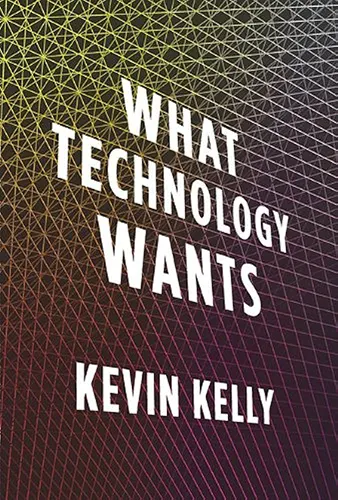
What Technology Wants
One of today's most respected thinkers turns the conversation about technology on its head by viewing technology as a natural system, an extension of biological evolution. By mapping the behavior of life, we paradoxically get a glimpse at where technology is headed—or "what it wants." Kevin Kelly offers a dozen trajectories in the coming decades for this near-living system. And as we align ourselves with technology's agenda, we can capture its colossal potential. This visionary and optimistic book explores how technology gives our lives greater meaning and is a must-read for anyone curious about the future.